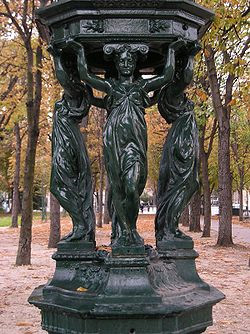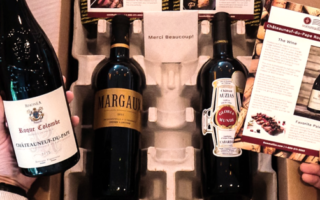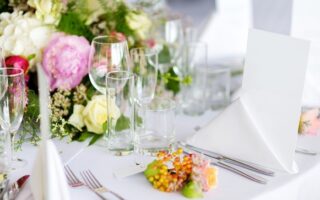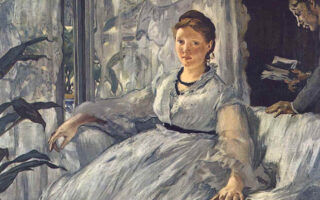Fountain

- SUBSCRIBE
- ALREADY SUBSCRIBED?
BECOME A BONJOUR PARIS MEMBER
Gain full access to our collection of over 5,000 articles and bring the City of Light into your life. Just 60 USD per year.
Find out why you should become a member here.
Sign in
Fill in your credentials below.
 Should I tell them? This is a hard one. But it’s not du vrai de vrai, the fountain they’re taking pictures of with their little pink digital camera, not the McCoy. It’s a so-called, a come-lately, an in-the-style-of creature, not ugly at all, but real is real, and my inner tour guide takes me by the elbow and walks me right up to them. I greet them as I always greet Anglophone tourists with my accented English and notice with some pleasant surprise that my accent is growing fainter. “You know,” I tell them, “that is not a véritable Wallace fountain.” They look unmoved, a little annoyed, possibly unnerved. “If you want, I can show you the real thing.” They look at one another for solidarity and move slightly closer together. “There are one or two not far from here. We could walk there or take the Métro.” They are moving away, but keeping an eye on me. “I’ll really be glad to. I’m not doing anything else at the moment.” I press the button on the fountain and drink. The water is good. They are gone.
Should I tell them? This is a hard one. But it’s not du vrai de vrai, the fountain they’re taking pictures of with their little pink digital camera, not the McCoy. It’s a so-called, a come-lately, an in-the-style-of creature, not ugly at all, but real is real, and my inner tour guide takes me by the elbow and walks me right up to them. I greet them as I always greet Anglophone tourists with my accented English and notice with some pleasant surprise that my accent is growing fainter. “You know,” I tell them, “that is not a véritable Wallace fountain.” They look unmoved, a little annoyed, possibly unnerved. “If you want, I can show you the real thing.” They look at one another for solidarity and move slightly closer together. “There are one or two not far from here. We could walk there or take the Métro.” They are moving away, but keeping an eye on me. “I’ll really be glad to. I’m not doing anything else at the moment.” I press the button on the fountain and drink. The water is good. They are gone.
What a shame—or I’ve done it again. I should have let them alone. But the pity of it is the Wallace fountains are fascinating, famous as emblems of Paris even though they are the product of German aggression and British philanthropy, with a smidge of Parisian Puritanism. During the Franco-Prussian war, German artillery smashed up many of the aqueducts, causing a serious shortage of drinking water. Sir Richard Wallace, a rich Brit and a parisomane, commissioned a prominent sculptor to produce the lovely cast-iron fountains for the benefit of all. The city of Paris, sniffing something for nothing, agreed, all the more readily because they were afraid that the waterless poor—the rich somehow were not affected by the lack of aqueducts: they really are different from you and me—would take to drinking wine instead. They hadn’t already? Or maybe they’d just wash their feet in Beaujolais. Never mind, the fountains were free and quite beautiful in the slimmed-down Renaissance sensibility of beaux-arts France. A hundred or so still survive in working order.
About twenty years after Wallace’s benefaction, the city decided water fountains were good and commissioned more, paying for them itself and therefore paying less. They are still good and they’re common in public parks, always painted dark green, squared off bollards with a push-button on the side, but much less heroic. People drink from them without a second thought. But not from the Wallaces, the word being about them that the water is not good. After all, it’s mainly the sans-logis who use them. The Mayor’s office takes pride in providing free water to the homeless—if only for half the year since the fountains are shut off early in winter lest the pipes freeze and aren’t started up again until spring. The homeless can always melt snow, provided it snows. It does not much or often in Paris. But others aren’t bothered.
The belief that the Wallace fountains’ water is bad for you is widespread, and I’ve been told to stay away from them. But, I complain, the water comes from the same pipes as the newer fountains and the homeless drink and they’re not dying or getting sick. Ah, them! That proves the point. They’re sick and pickled already. You’ll catch something from them. I will? What will I catch? Poverty? Eviction? Dirt under my fingernails?
I wonder if this has always been true. Until fifty years ago, the fountains had drinking cups chained to them. Someone decided this wasn’t healthy, so the cups went. If I want to drink, I can cup my hands under the water or stick my head between two of the four caryatids holding up the fountain’s dome and slurp. Maybe that’s what’s bothering Parisians: they won’t even eat a burger with their hands. Maybe that’s when the canard that the water in the fountains was not safe to drink began: touch your food and drink and it is ruined, not to mention ruinous. But I like the idea. The caryatids represent kindness, simplicity, charity and sobriety, so I can have my drink between two virtues in four different combinations. Imagine that. And I do and I’m heading off for a street I know in the Eleventh Arrondissement where there are two fountains and a restaurant I like.
It’s really more like two streets or one divided with a cigar-shaped island in the middle which houses the fountains, trees, a café, and a few other things that are nice to look at. With the exception of the restaurant I know, there’s not much here to bring in people from other parts of the city or tourists, unless perhaps they have decided to visit and photograph every picturesque fountain in the twenty Arrondissements. That’s another way of saying that strangers are noticed—and I am as I wander towards the fountain. It’s opposite the café where no one is sitting outside, but a lot of people are standing near the door or just out on the sidewalk and paying attention me. The closer I get to the fountain, the more I’m aware that everyone is watching me and, though it’s too far to hear conversations clearly, I’m pretty sure they are getting quieter. They have figured me out. I have no camera and I’m now too close to the fountain to be just an admiring tourist. They’re looking at me, not wanting to believe what I am about to do, then they simply can’t take it: la vache! he’s going to drink the water from the fountain! Well, holy cow yourself, I think, stick my neck between kindness and simplicity, hold my hands under the water, and—not quite.
Immediately, the people in the café begin calling. Non, non, monsieur, don’t drink, it’s no good. I don’t look up. Someone tries English, another German, and a third Spanish, I think. If they try Arabic, I’ll give them the finger. A woman trots up and taps me on the shoulder. In very loud French with gestures—cupping her hands, miming a swallow or two, then running her finger across her neck—she assures me the water is poisoned. Really? But, you see, madame, I have seen on le site Web of the Mayor’s office that the water from les fontaines Wallace is guaranteed potable. She looks as if she’s swallowed a fly, maybe a couple. Her response is perfect: Ah, but you speak French quite well. You must live here in Paris—or do you travel often? Business or pleasure? Do you know the quartier or have friends here? I have lived here all my life, the only part of Paris for me.
But the water, madame, the water. There’s nothing wrong with it. C’est une conte de bonne femme that it’s bad. Ah, she says, you even know phrases like old wives’ tale—très bien. Come, say hello to my friends, they will be impressed. I do, and they are. They offer me a beer, perhaps because it’s safer than the water, and I take it since that is what they are drinking—and besides for a stranger to offer you anything of value in Paris is not an event to miss or turn your nose up at. I talk about the water. They talk about my French: flattering. I talk about the water. They talk about the beer: boring. I talk about the water. They talk about the sans-logis: condescending. I talk about the water. Nothing doing. I offer to buy a round, but they decline. I say merci to all and leave. I am tired of talking about the water.
Up the street at the far end of the cigar-shaped island and out of sight of the café and my benefactors is the other Wallace fountain. All I wanted was a drink of water, and now even more to get the taste of beer out of my mouth. The restaurant I like can wait—water first, food later. I go right up to the fountain. A man starts yelling the water is no good. Merde, I say, go away. I stick my head between two virtuous caryatids at random and drink. The water is good. He is gone.
© Joseph Lestrange


